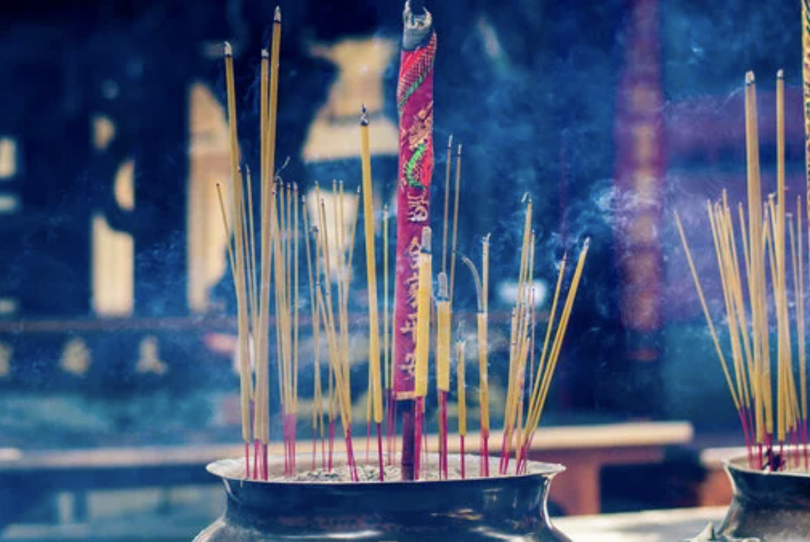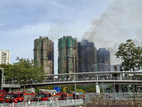During the Chinese New Year, the overwhelming crowds at temples and shrines across China once again drew public attention.
On January 29, the first day of the lunar calendar, Lingyin Temple, located by West Lake in Hangzhou, Zhejiang Province, was packed as early as 5 a.m. To secure the "first incense offering," many people set out as early as 3 a.m. Despite freezing temperatures as low as -10°C in Beijing, worshippers queued overnight for up to ten hours to be among the first to burn incense at Yonghe Temple. By 7 a.m., 40,000 visitors had entered the temple to offer incense once the temple was open.
The "first incense" refers to the first stick burned in temples or Taoist shrines on special occasions. It is believed that being the first to offer incense on these significant days brings special favor from the gods. This practice is popular across both northern and southern China.
In recent years, enthusiasm for temple visits during the Chinese New Year has grown significantly, along with the rise of the "temple economy." Notably, incense burning, traditionally favored by the elderly, has gained increasing popularity among young people.
According to data from Trip.com, temple-related tourism orders in February 2023 surged by 310% year-on-year, with nearly 50% of ticket bookings made by those born in the 1990s and 2000s. Social media phrases such as "Young people, faced with the choice between working hard and moving up, have instead chosen to light incense" and "Between asking for help and relying on themselves, young people have opted to pray to Buddha" have frequently trended on Weibo, China's leading social media platform for microblogging and trending news.
An article published by China Youth Research analyzed why young people are increasingly drawn to Buddhist and Daoist rituals. The article defined youth as those aged 18 to 35 and utilized data from the 2018 Chinese General Social Survey (CGSS2018) to outline the profile of young individuals engaging in these practices. It identified four key reasons behind this trend.
First, increasing uncertainties in a "risk society," exacerbated by the pandemic, have left many struggling with challenges without sufficient guidance, leading them to seek spiritual relief. Second, societal expectations around career and marriage impose age-related pressures, while difficulties in employment, family formation, and housing intensify anxiety. Third, the dominance of "fast culture" overwhelms young people, making the slow-paced and tranquil environment of temples an appealing refuge. Lastly, the gap between societal expectations and personal realities pushes many to turn to religious rituals as a means of coping with stress and uncertainty.
People’s Tribune highlighted the influence of online media and social networks on young people’s incense-burning practices. When incense burning becomes a viral trend, many young people may be swayed by its popularity, developing a sense of conformity and engaging in group behavior, making them more willing to embrace and participate in the activity.
The growing trend of young people burning incense reflects their spiritual needs to some extent. Faced with the pressures and challenges of real life, some turn to traditional folk rituals to seek comfort and strength.
In response to the surge in incense burning during the Chinese New Year, some Christians have commented that Chinese religious practices are often highly pragmatic. People worship deities based on their perceived effectiveness—whichever god is believed to be the most responsive receives devotion. This approach is rooted in utilitarianism rather than genuine faith. Concerns about life and death, self-reflection, or moral improvement are rarely considered. Such behavior, they argue, is more accurately described as idol veneration rather than true faith.
Meanwhile, some churches and Christians have reflected on the deeper spiritual needs behind this phenomenon. Many believers and pastors emphasize the importance of addressing young people’s real-life struggles. They advocate for teaching not only spiritual truths but also practical applications of faith in daily life. Additionally, churches have taken proactive steps by offering programs on relationships, careers, and employment, providing tangible support for the challenges young people face, and helping them integrate faith into their everyday lives.
Similar to the temple crowds, many non-believers visit churches during the Chinese New Year, often alongside their Christian family members. Some seek answers to economic, health, or relationship struggles. In response, churches have actively organized events such as New Year’s Eve charity dinners, evangelistic services, and testimony-sharing gatherings.
For instance, Beimen Church in Zhangzhou, Fujian, hosted its 17th charity New Year’s Eve dinner, providing warmth and companionship to migrant workers, single-parent families, and the elderly. This year, the event accommodated 230 attendees across 23 tables. In Shandong, a seeker was moved by sermons, testimonies, and fellowship at a New Year evangelistic gathering, leading him to embark on a journey of faith.
Notably, the Chinese New Year also brings shifts in church attendance patterns. While urban churches experience a decline due to members returning home for the holiday, rural churches witness a temporary revival. A pastor suggests that urban churches should cater to those remaining in the city by organizing community activities and providing online pastoral care. Many believers admit that the New Year is a spiritually challenging time, especially for those with non-Christian families. Churches can use digital platforms to provide continuous spiritual nourishment and guidance. Meanwhile, rural churches can prepare in advance to welcome returning believers and facilitate meaningful fellowship.












